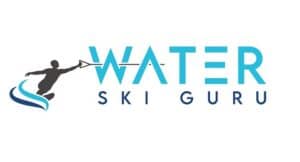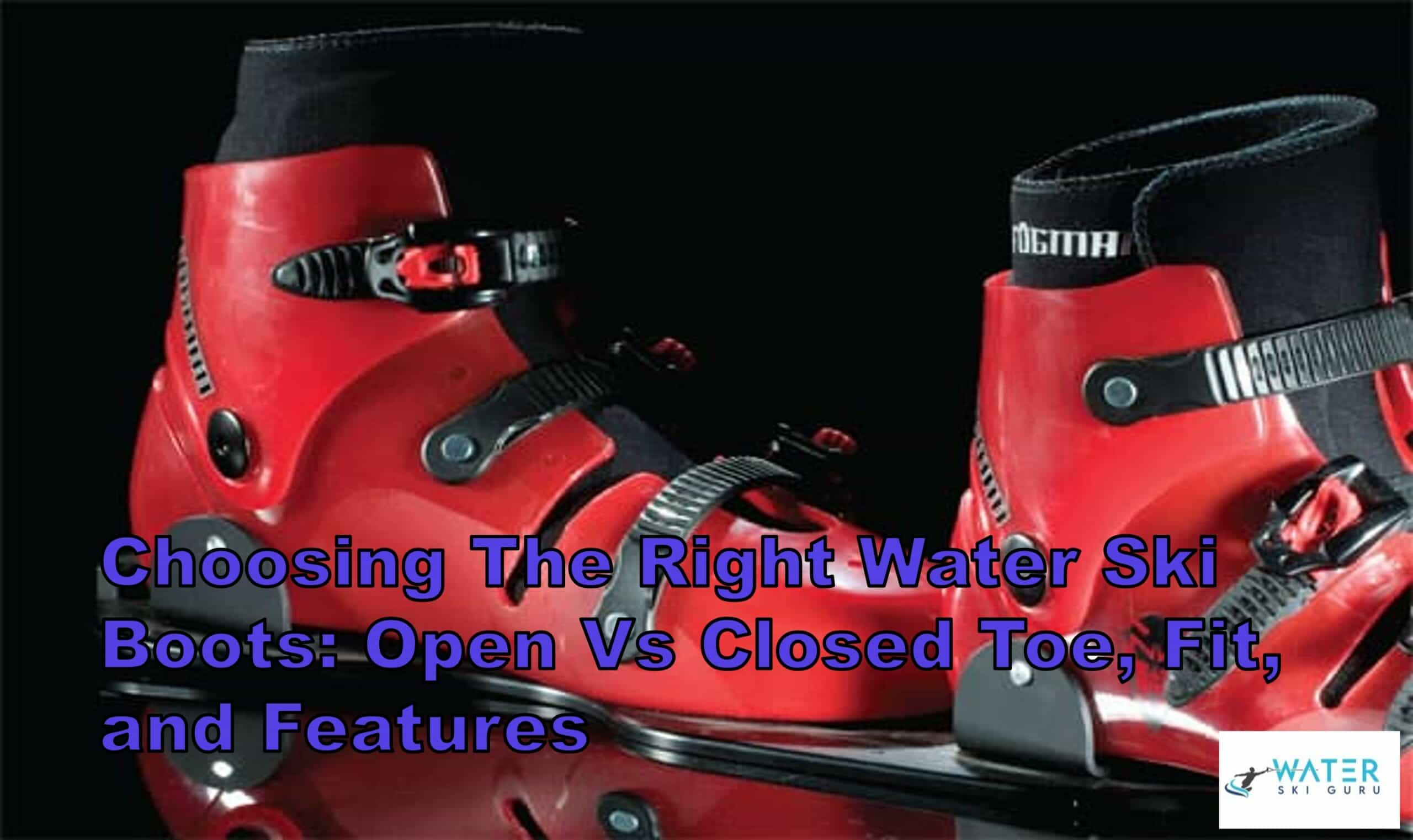Are you looking to improve your waterskiing experience? Look no further than your boots or bindings. The right pair of boots can make all the difference when it comes to performance and comfort on the water. But with so many options available, it can be difficult to know where to start.
In this article, we’ll guide you through the process of choosing the right waterski boots, focusing on the differences between open and closed toe styles, as well as fit and features to consider.
First, let’s talk about the two main styles of boots: open toe and closed toe. Open toe boots are versatile and can be shared among multiple skiers, making them a great option for families or groups. However, closed toe boots provide more support and performance, especially for advanced skiers or those looking to improve their skills. It’s important to consider your experience level and goals when choosing between these two styles.
But that’s not all – there are also various features and technologies to consider when selecting the perfect pair of boots. So, let’s dive in and explore the world of waterski boots.
Boot Styles and Types
You’ll need to decide between open toe and closed toe boots, as each style has its own benefits and drawbacks.
Open toe boots are versatile and can accommodate a range of foot sizes, making them a great option for families or multiple skiers using the same equipment. They also provide more freedom for the toes and are generally more comfortable in warmer weather. However, open toe boots offer less support and performance compared to closed toe boots, which can impact your skiing experience.
On the other hand, closed toe boots offer better support and performance, making them a great choice for more experienced skiers who want to improve their skills. They fit one or two foot sizes and offer a more precise and secure fit. Closed toe boots are also more durable and can withstand more wear and tear. However, they are less versatile and may not fit as many people as open toe boots.
Choosing the right style ultimately depends on your experience level, personal preferences, and skiing goals.
Fit and Sizing
Secure snugness is significant for successful skiing and sizing the suitable ski boot size is a crucial step to ensure comfort and control. When choosing between open and closed toe boots, it is important to consider your specific needs and preferences. Open toe boots offer more versatility and can be shared among multiple skiers, but may sacrifice support and performance. Closed toe boots offer more support and performance, but may be less versatile and fit only one or two foot sizes.
To find the right fit for your waterski boots, it is important to consider the break-in period and ensure the toes are just shy of the end of the boot. Waterski boots typically use U.S. numerical shoe sizes and should fit snugly without causing pain or pinching. Different lacing technologies, such as lace locks, BOA/ATOP systems, and buckle systems, can help provide a secure and repeatable fit. Rear toe plates also come in fixed and adjustable options, with adjustable plates offering more flexibility. By choosing the right fit and style of boot, you can optimize your comfort and control on the water.
| Benefit | Open Toe | Closed Toe |
| Versatility | Can be shared by multiple skiers, accommodates a range of foot sizes | Fits only one or two foot sizes |
| Support and Performance | Sacrifices support and performance | Offers more support and performance |
| Break-In Period | Shorter break-in period | Longer break-in period |
| Fit | Snug fit, but may not fit as securely | Snug fit, but may fit more securely |
| Price | Often less expensive | Often more expensive |
Features and Adjustability
To optimize your performance on the water, it’s important to consider the adjustability and features of your waterski boots.
One of the main customization options for waterski boots is the lacing technology used to secure the foot into the boot. Lace locks are a simple and easy-to-use option that can be adjusted quickly, while BOA/ATOP systems allow for more micro-adjustments to achieve the perfect fit. Buckle systems provide the most secure and repeatable fit, but may take longer to adjust.
Another important feature to consider is the materials used in the boot construction. The popular HO Animal boot is made of rubber, which is durable and provides good support. Some boots may feature a bungee to tighten the top portion of the boot, while others may have a BOA/ATOP system for more precise adjustments.
Ultimately, finding the right combination of features and adjustability can help you feel more comfortable and confident on the water, leading to a better skiing experience overall.
Frequently Asked Questions
How often should I replace my waterski boots?
Your boots are like the tires on your car, they wear over time. Signs of wear include cracking, tears, and loss of support. Replace your boots when they no longer provide the necessary support for safe skiing.
Can I use closed toe boots for wakeboarding?
Closed toe boots provide better support and performance for waterskiing, but may not be ideal for wakeboarding due to the need for more flexibility. Specialized wakeboarding boots offer advantages with features like softer flex and more ankle mobility.
Are there any specific maintenance tips for waterski boots?
To maintain your waterski boots, wipe them down with a damp cloth after each use. Avoid storing them in extreme temperatures or direct sunlight. Use boot-specific cleaners to remove stubborn stains. Store them in a dry, well-ventilated area.
Can I use regular shoe sizes to determine my waterski boot size?
To ensure sizing accuracy when choosing waterski boots, use U.S. numerical shoe sizes and factor in foot shape. Fit should be snug without causing pain or pinching. Remember that different brands may have slight variations in sizing.
Is it necessary to wear socks with waterski boots?
As you slip on your waterski boots, you may be wondering whether to wear socks or not. It’s personal preference, but consider the material of your boots. If they’re made of rubber, no socks are needed for a snug fit.
Conclusion
Now that you’ve got a better understanding of the differences between open and closed toe boots, as well as the importance of fit and features, you can confidently choose the right waterski boots for your needs.
Remember to consider the type of skiing you’ll be doing, the level of support and performance you require, and your personal preferences for fit and adjustability.
One interesting statistic to consider is that, according to a survey by the Water Sports Industry Association, over 70% of waterskiers prefer closed toe boots for their superior support and performance.
This shows that closed toe boots are the preferred choice for serious skiers who want to take their skills to the next level. However, open toe boots may still be a good option for beginner or recreational skiers who value versatility and comfort over performance.
Regardless of your choice, be sure to invest in high-quality boots that fit well and provide the features you need for a safe and enjoyable skiing experience.

